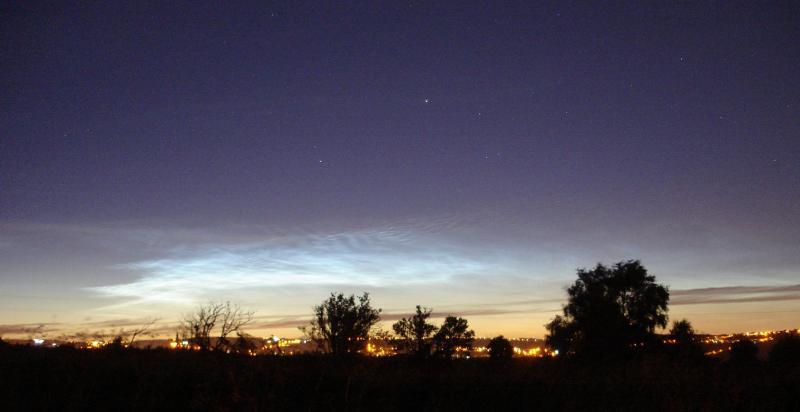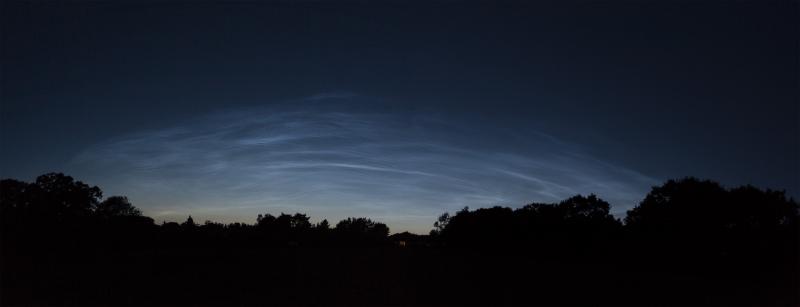2018 May 26
Noctilucent Clouds – a beginners’ guide

NLCs can be seen from around mid May to early August during the darkest part of a summer’s night when the Sun is between 6 – 16 degrees below the horizon. Typically, they will occupy the northern horizon, along the twilight arch, extending to an altitude of 10 – 15 degrees. Over the NLC “season” the bright star Capella dominates this part of the sky and serves as a good marker for the NLC observer. They used to be associated with northern UK but have been seen as far south as central France and they seem to be spreading further south with each season.
Observations of NLC remain of great value to professional scientists studying upper-atmosphere phenomena. Useful observations are very easy to make and require no special equipment.
The following information lists the important details you should include in your report:
LOCATION: Give the latitude and longitude of the place observations were made. Alternatively, give the name of the nearest town or city.
DATE: Use the “double-date” convention as used in reporting aurorae. That is, “June 21-22″ would refer to the night of the 21st and the early hours of the 22nd.
TIME: Try to use universal time (UT) even though British Summer Time (BST) will be in civil use for UK observers. Remember, UT = GMT = (BST – 1 hour).

Observations
The following features and details should be recorded at 15 minute intervals (i.e. on the hour, quarter past, half past and so on):
AZIMUTHS If you see NLC measure the left (western) and right hand (eastern) extent of the display. This is measured in degrees with west = 270, north = 000, east = 90 and south = 180. Polaris defines the northern point of your horizon. Azimuths can be gauged by using a clenched fist, held at arms length, as a measure of 10 degrees.
ELEVATION If possible, measure the angle subtended by the uppermost part of the display. A simple alidade can be made from a protractor and plumb line for this purpose.
BRIGHTNESS NLC brightness is measured on a three point scale with 1 = faint; 2 = moderate; 3 = very bright.
Structure
NLC forms are classified into 5 easily identified structures. Any combination of the following is possible:
Type 1: Veil – A simple structureless sheet, sometimes as background to other forms.
Type 2: Bands – Lines or streaks, parallel or crossing at small angles.
Type 3: Waves – Fine herring-bone structure like the sand ripples on a beach at low tide. Very characteristic of NLC.
Type 4: Whirls – Large-scale looped or twisted structures.
Type 5: Amorphous – Isolated patches of NLC with no definite structure.
Drawings
Simple sketches of the NLC can be very useful. These are best made in negative form with the darker parts of the sketch corresponding to the brighter NLC.

Photography
Photographs of NLC can easily be taken with a digital camera firmly fixed to a tripod; using 400 ISO gives good results. An exposure of 3-6 seconds with a lens aperture setting of f3.4 will normally suffice. However, it is always best to take several shots of different exposures, and pick the best exposure. Once this is done you can try a panorama by taking several overlapping photos. Make sure the camera is level, then move it about 20 degrees after each shot, starting just beyond one end. This makes sure that you will get it all, because the camera will see more than you can.

Sandra Brantingham
Sandra is the Director of the Aurora and Noctilucent Cloud Section of the BAA.
A selection of observations of noctilucent clouds which BAA members have uploaded to their Member pages
[Thumbnail image by Gordon Mackie]
| The British Astronomical Association supports amateur astronomers around the UK and the rest of the world. Find out more about the BAA or join us. |
